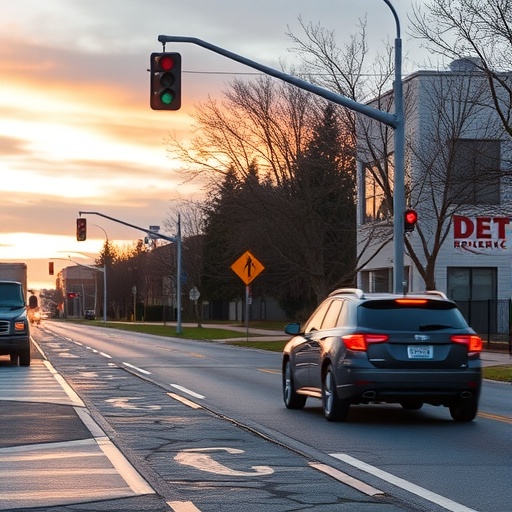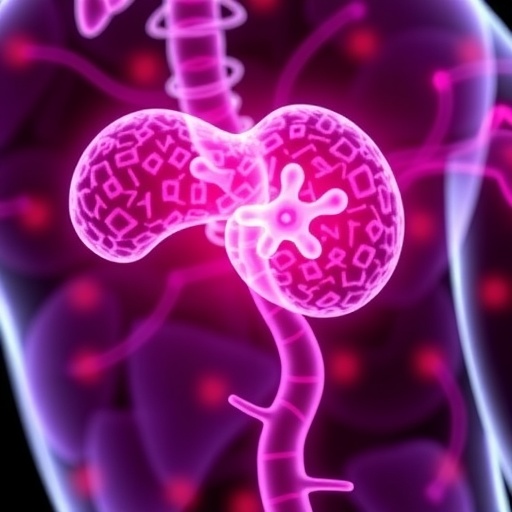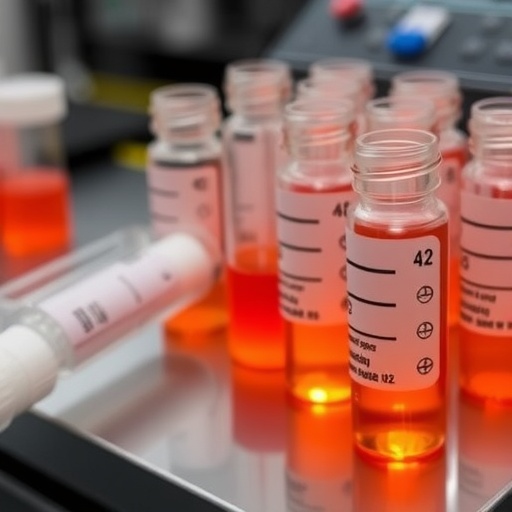
In the ongoing battle to reduce the staggering toll of roadway fatalities, it is increasingly clear that the responsibility for traffic safety extends far beyond the driver behind the wheel. A recent comprehensive review by researchers at the Virginia Tech Transportation Institute (VTTI) challenges the traditional notion that driver error alone is to blame for the catastrophic loss of life on roads. Published in the prestigious New England Journal of Medicine, this article embarks on a critical evaluation of the Safe System Approach, a transformative framework aimed at reengineering how societies conceive and enact road safety.
The Safe System Approach fundamentally reshapes the way safety is managed by recognizing the shared responsibility of all stakeholders. Rather than isolating drivers as the sole agents accountable for accidents, this approach spreads the onus across transportation planners, policymakers, vehicle manufacturers, health professionals, and infrastructure designers. It acknowledges human fallibility and seeks to create systems that anticipate, accommodate, and mitigate errors before they can lead to injury or death. Through rigorous analysis of extensive public data and contemporary research, authors Charlie Klauer and Zac Doerzaph articulate how embedding this philosophy into U.S. transportation policy can usher in an era virtually free of traffic fatalities.
One of the defining features of a Safe System is its multilayered focus on safety, emphasizing five key pillars: safer people, safer roads, safer vehicles, safer speeds, and post-crash care. Each element acts as a vital cog in a holistic mechanism designed not only to prevent accidents but also to minimize the severity of unavoidable collisions. For instance, safer people incorporate advanced driver training and education programs, targeting behaviors such as distracted or impaired driving that remain persistent contributors to crashes. The approach advocates for embracing technological advances, such as driver monitoring systems and automated emergency interventions, to further reduce human error.
.adsslot_ycZMPDoXRl{width:728px !important;height:90px !important;}
@media(max-width:1199px){ .adsslot_ycZMPDoXRl{width:468px !important;height:60px !important;}
}
@media(max-width:767px){ .adsslot_ycZMPDoXRl{width:320px !important;height:50px !important;}
}
ADVERTISEMENT
Equally critical is the redesign of roadways that account for inevitable human mistakes. Safe road design under this framework involves creating forgiving environments with clear signage, properly managed speed limits, and infrastructure that protects vulnerable users like pedestrians and cyclists. Rather than penalizing driver error post-accident, these engineering solutions aim to prevent incidents from occurring in the first place. The adoption of vehicle-to-everything (V2X) communication technologies promises to revolutionize traffic management by enabling real-time interaction between vehicles, road infrastructure, and even pedestrians, reducing collision risks and improving traffic flow.
Safer speeds represent another cornerstone of this approach. By tailoring speed limits to the context of the specific road environment—balancing efficiency with safety—the Safe System framework dismisses the outdated ‘speed kills’ mantra in favor of nuanced policies grounded in empirical data. Enforcement of speed regulations through highly visible law enforcement and automated means complements infrastructural measures to maintain safe velocities across diverse traffic scenarios.
Post-crash care is the final pillar and an often overlooked yet essential component of a comprehensive traffic safety strategy. Improved emergency response systems, particularly in rural and underserved areas, alongside enhanced trauma care training, dramatically increase survival rates after severe crashes. The overarching goal is to ensure that when crashes do occur, they result in fewer catastrophic outcomes, thereby closing the loop in the Safe System’s vision of minimizing loss of life.
The data driving this urgency is grim and demands immediate action. In 2021 alone, the National Highway Traffic Safety Administration reported over 42,000 fatalities and nearly 2.5 million injuries on U.S. roadways. This volume of death and injury equates to a catastrophic event comparable in scale to a commercial airliner crash occurring every single day. Such stark statistics underscore the failure of conventional approaches and intensify calls for systemic change.
Countries internationally that have embraced similar Safe System philosophies provide encouraging proof of concept. Nations like Sweden and the Netherlands have demonstrated meaningful reductions in traffic deaths by integrating holistic safety measures supported by strong policy frameworks and sustained commitment. Their successes serve as evidence that a cultural and systemic shift in transportation safety, while challenging, is entirely attainable.
Despite the promise of the Safe System Approach, its effectiveness hinges on the unwavering cooperation of diverse stakeholders. Transportation executives, urban planners, legislators, manufacturers, and public health officials must synchronize efforts to overhaul entrenched practices and resistance to change. Education remains critical, but must be paired with technology and policy innovations to address multifaceted road safety challenges comprehensively.
Emerging technologies are poised to propel this movement forward. Active safety features such as automatic emergency braking, adaptive cruise control, driver distraction detection, and backup cameras have already begun reducing crash incidences. The widespread adoption of these systems, integrated thoughtfully within the Safe System framework, could mark the difference between tragic crashes and prevented accidents.
Simultaneously, expanding driver education programs that emphasize realistic, evidence-based training on the dangers of impaired and distracted driving can reshape driver behavior. By incorporating these programs with technology, such as in-vehicle monitoring or feedback systems, drivers receive direct and timely cues that improve focus and reduce risky actions.
Policy enhancement remains a critical lever for change. Legislation focused on safer road design must prioritize accommodating human errors and the transition toward automated vehicle systems. Furthermore, speed management policies need revisiting to reflect contemporary traffic realities and incorporate data-driven enforcement, ensuring that speed limits are both respected and realistic.
In rural and remote areas, the expansion of post-crash health care capacity is vital. Establishing rapid response teams, investing in trauma care training, and deploying telemedicine resources could substantially reduce fatalities where medical help is currently delayed, underscoring the importance of equity in safety provision.
According to Doerzaph, the executive director of the Virginia Tech institute, creating a transportation future that is efficient, equitable, and inherently safe requires not only technical innovation but a fundamental shift in societal values surrounding mobility and safety. Achieving zero traffic fatalities demands bold commitment, creativity, and a reimagining of the entire ecosystem that governs how people and goods move.
Klauer, a research scientist and industrial engineering professor, emphasizes that reaching zero deaths is no longer a distant ideal but an achievable goal within the current generation’s lifetime if the Safe System principles are universally embraced and rigorously implemented. The collective responsibility is clear: to safeguard human lives by constructing a transportation environment where death and serious injury are no longer an accepted cost of mobility.
In conclusion, the Safe System Approach offers a comprehensive, data-informed, and pragmatic blueprint for transforming transportation safety. By addressing human factors alongside engineering, technology, policy, and emergency response, this framework lays the foundation for a future free from the scourge of traffic fatalities—a future where roads serve as conduits of safe, efficient, and resilient movement for all users.
Subject of Research: Roadway safety and the Safe System Approach to reducing traffic fatalities
Article Title: Insights Into the Safe System Approach for Achieving Zero Traffic Deaths
News Publication Date: 30-Jul-2025
Image Credits: Photo by Jacob Levin for Virginia Tech
Keywords: Transportation, Vehicles, Automobile traffic, Automobiles, Transportation infrastructure, Traffic flow, Traffic engineering, Automotive engineering
Tags: accountability in traffic accidentscollaborative efforts in transportation safetycomprehensive evaluation of road safetyhuman fallibility in drivinginfrastructure design for safer roadsinnovative solutions for reducing roadway fatalitiespolicies to reduce traffic fatalitiespublic data analysis for traffic safetyrole of transportation planners in safetySafe System Approach to road safetyshared responsibility in traffic safetyVirginia Tech Transportation Institute research





